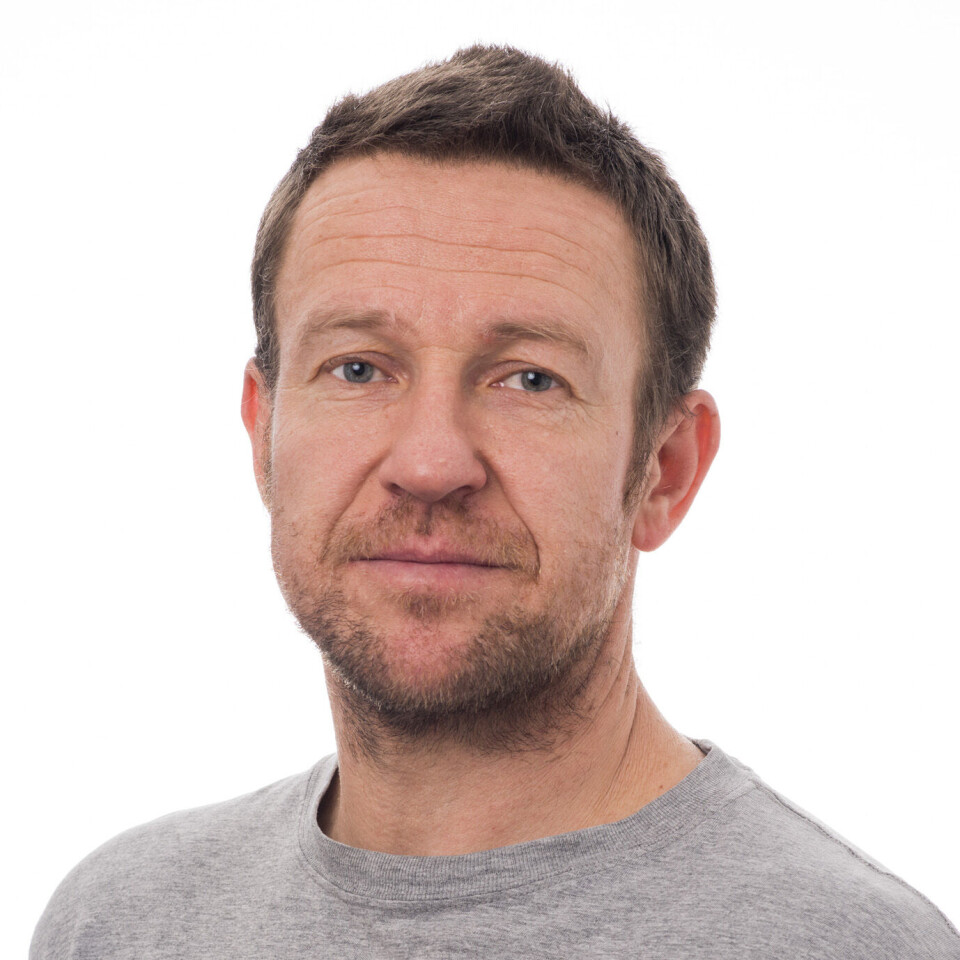THIS CONTENT IS BROUGHT TO YOU BY The Norwegian School of Sport Sciences - read more
Do creatine, pre-workout, and protein supplements enhance training effects, or are they just a waste of money?
Professor Truls Raastad gives you the answers.

There are few performance-enhancing substances that have a documented effect.
Many young people are looking for ways to build muscle. They spend a lot of money on products like pre-workout, protein supplements, and creatine.
30 per cent do not respond to creatine
Are there any products that can provide a training effect?
“Creatine is one of the few performance-enhancing supplements that has a fairly well-documented effect. It has an effect on muscle growth when you combine it with strength training,” says Truls Raastad.
He is a professor at the Norwegian School of Sport Sciences' Department of Physical Performance.
Raastad explains that research shows you can increase muscle growth and strength by 10-20 per cent with creatine supplements over a period of 12 weeks.
However, around 30 per cent do not respond to creatine. Researchers are also uncertain about the long-term effect.

“If you have a two-to-three-year perspective for your training goal, it's not certain that you'll get a huge effect from creatine supplements. It's primarily the first phase, the first 12 weeks of training, that it's well documented you get extra muscle growth with creatine,” says Raastad.
Creatine is naturally present in our muscles.
The body can produce the substance itself, and those who eat meat and fish also get it through their diet.
This may be part of the explanation for why not everyone experiences an effect from the powder.
Most people get enough protein
The professor is more sceptical about various forms of protein supplements. A simpler and cheaper option could be just a couple of extra glasses of milk.
“We see that protein intake has an effect on muscle growth during strength training, up to a certain level. If you consume 1.6 grams of protein per kilogram of body weight per day – which you can get through a normal diet – it doesn't appear that increasing intake with protein supplements beyond that gives any additional effect from strength training,” explains Raastad.
He believes that most people who train regularly already get that amount through a normal diet. It's easy to achieve with small adjustments if your intake is initially a bit too low.
“It doesn't matter whether you increase your protein intake with supplements, drink a couple of extra glasses of milk, or simply include good protein sources in your diet,” he says.
Where does the desire for muscle growth come from?
Adviser Nicholas Johansen at Anti-Doping Norway answers young people's questions about body, training, and doping through the anonymous chat service Dopingkontakten.

There, they clearly notice that more and more young people are concerned with performance-enhancing substances to build muscle.
“We try to understand the underlying reason why young people want to use, for example, pre-workout, or whatever it might be. We try to get them to reflect on why it's so important. Where does this desire for muscle growth come from?” he says.
Little effect from pre-workout
Pre-workout is a supplement many use before a training session. The goal is more energy and better training results.
Raastad explains that what the manufacturers have done is to mix almost all the supplements that have some documented effect into one product.
“They all have caffeine, which gives a stimulating effect, so that you might be able to push a bit harder during your workout. Creatine is also often mixed in, and what we know about creatine is that it has zero effect when taken right before a workout. It needs to be built up over time. Pre-workout is probably not the best way to take creatine,” he says.
The supplement also contains beta-alanine. Over time, it can increase the mucscle's buffering capacity, which allows for slightly more intense physical activity.
However, the buffer capacity in muscle also needs to be built up over six weeks before it has an effect, and provides no benefit when used as a pre-workout, according to Raastad.
“It also often contains nitrate, which can give an acute, but probably very small effect on blood flow to the muscles. Often it's just the caffeine that actually has an effect on training in these supplements,” he says.
Questions from boys as young as 13
Even if you manage to push a bit harder during a workout using pre-workouts, it does not make much difference in the grand scheme of things, according to the professor.
“The quality and effect of your training isn't about going all-out in every single training session. You should train in a controlled manner, and push to a certain degree of exhaustion. I've never experienced it being a big problem to push yourself enough if you're training three to four times a week,” says Raastad.
He emphasises that you can also overdo it if you have three to four intense sessions on the same muscle group in one week.
At Dopingkontakten, Nicholas Johansen gets the most questions from young boys who want a certain type of body.
“They want large, more defined muscles and lower fat percentage. Young boys who are dissatisfied with their height and growth wonder if there's something that can help. It's an extremely vulnerable period,” says Johansen.
Young boys think steroids are okay
A recent report from Anti-Doping Norway showed that 18 per cent of adolescents aged 13 to 19 think it's okay to use anabolic steroids in connection with training.
Among boys, 26 per cent answered that it was okay.
Johansen encourages parents and others who are close to young people to talk to them about performance-enhancing substances and doping.
“Talk about attitudes and training habits. There are probably many young people who train at fitness centres, completely independent of parents and other adults, and perhaps this can provide a greater opportunity for unhealthy attitudes to grow. Be a bit proactive and have an open dialogue as early as possible,” urges Johansen.
You can listen to the full discussion in the Norwegian podcast episode below:
———
Read the Norwegian version of this article on forskning.no

This content is paid for and presented by The Norwegian School of Sport Sciences
This content is created by The Norwegian School of Sport Sciences' communication staff, who use this platform to communicate science and share results from research with the public. The Norwegian School of Sport Sciences is one of more than 80 owners of ScienceNorway.no. Read more here.
More content from The Norwegian School of Sport Sciences:
-
Football expert wants to change how people watch football at home
-
Kristine suffered permanent brain damage at 22: "Life can still be good even if you don’t fully recover"
-
Para sports: "The sports community was my absolute saving grace"
-
Cancer survivor Monica trained for five months: The results are remarkable
-
What you should know about the syndrome affecting many young athletes
-
New findings on how athletes make the best decisions




































